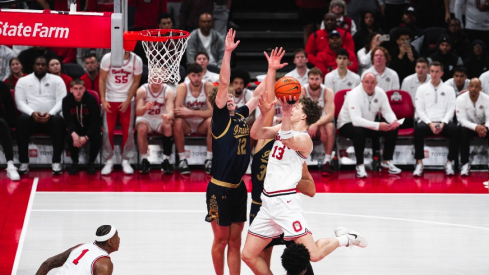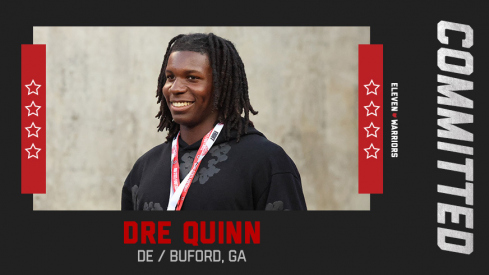
It is time to revisit a topic that we speculated about last offseason — what will the Ohio State offense look like under Urban Meyer, Tom Herman, and the Buckeye offense coaching staff? With a season under our belts, we can now more definitively describe the Buckeye offensive philosophy.
To better understand the Buckeye attack, it is helpful to begin with the theory behind Meyer's approach. We can then drill down upon the base Ohio State offense.
What's Old is New Again
As surmised last year, Meyer's Buckeye offense largely reflects the same spread to run offense that he employed at Florida. Underneath all the bells and whistles, Meyer's basic goal, the foundation of his offense, is running the football between the tackles.
Everything that Meyer does on offense is predicated on facilitating the ability to run the football inside. The primary way to do so is improving his offense's arithmetic. The focus is upon the number of safeties the defense can apply against the run game.

The defense will always have a numeric advantage vis-a-vis the offense because the offense necessarily cannot block the ball carrier's counterpart. In recent years, defenses gained a second unblocked defender against a pro-style team in the run game — the quarterback's counterpart — once he handed off the football.
Enter the 'shotgun spread.' Meyer seeks to reset the equation by making the defense account for the QB in the run game. OSU often bases from '11' personnel (3 WR, 1 TE, 1 RB).

This formation puts 8 offenders in the box. With the QB as a run threat, the defense must match those 8 defenders. If the defense tries to play two deep safeties, the offense has a one-man advantage in the box. OSU will happily run the football unless and until a defense adjusts. If the defense evens numbers by employing a safety against the run, the offense has 1) limited the defense's coverage options and 2) left fewer defenders to cover 4 potential immediate vertical threats.
For Meyer, the pass game is itself a constraint, i.e. a way to protect the base run game.

Arithmetic Games
Meyer uses the QB in two methods to further protect that inside run game. The first concept is 'defensive end confusion.'

As indicated in the above slide, Meyer, Herman & Co. never want either defensive end to know whether and how they will be read or blocked. This works on two levels. OSU wants to disguise who is being read to slow the defense as a whole. On nearly every handoff, the QB will read a defender. This forces an unblocked defender to constantly consider whether he is being read and not pursue the football.
And at a personnel level, OSU wants to slow defensive ends, who they believe are often a defense's most disruptive players. This is why zone read and inverted veer/power read work well together. From the same pre-snap formation, the offense can read either the backside or frontside defender.


Real Old School Football
The other way the Buckeyes use the QB to re-equate numbers in the run game is 'single wing' plays. That is, lead QB runs. With the halfback as the blocker — not the ball carrier — the offense can run basic I formation plays even after putting a third wide receiver wide. This again leaves the defense with one fewer defender to play against a lead play as they would from the traditional I formation.
For example, one of OSU's favorite plays in 2012 was QB counter trey. Note in the below video that OSU has a 7 v. 6 advantage within the box.
Meyer's embrace of spread to run is to increase his offense's ability to run inside by creating an additional potential ball carrier the defense must account for vis-a-via pro-style offenses. Next week I will look at some of the layers Meyer and his staff put on top of this arithmetic to further protect his base plays.

